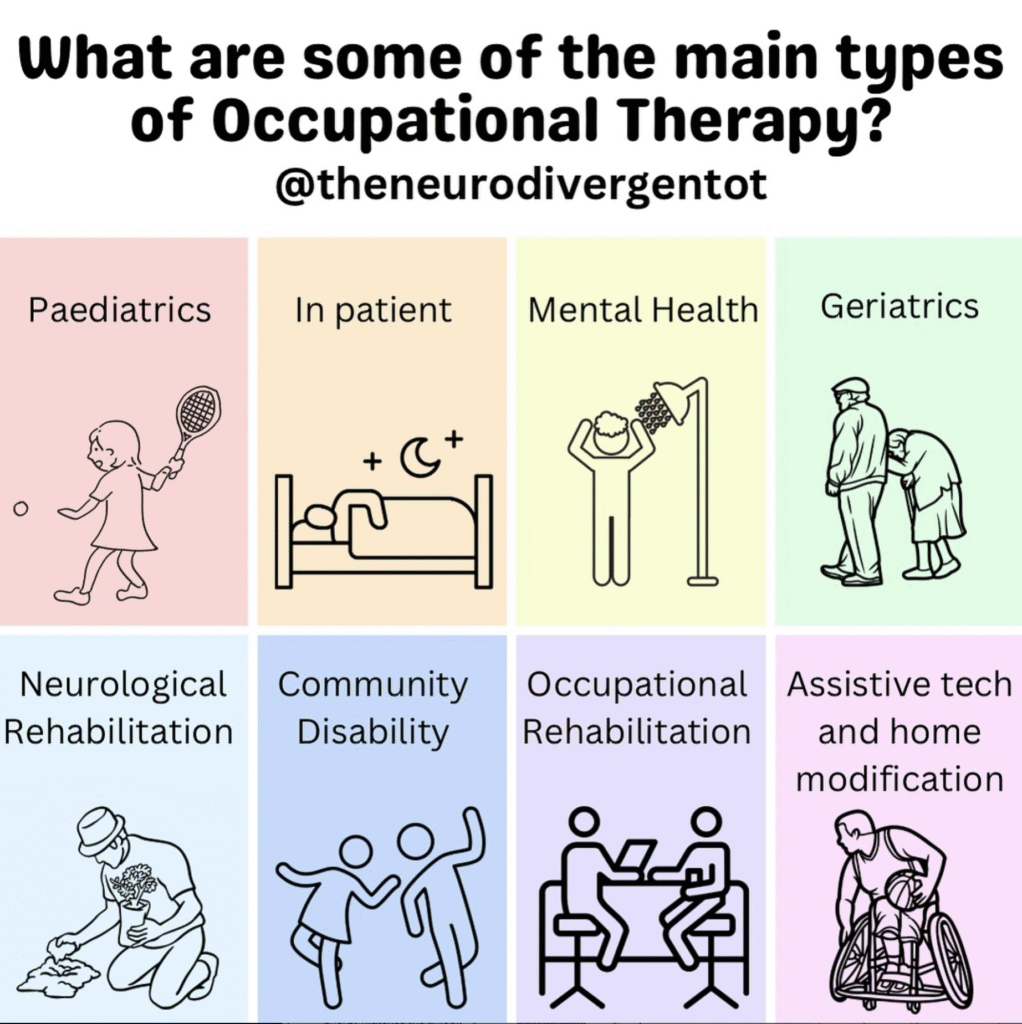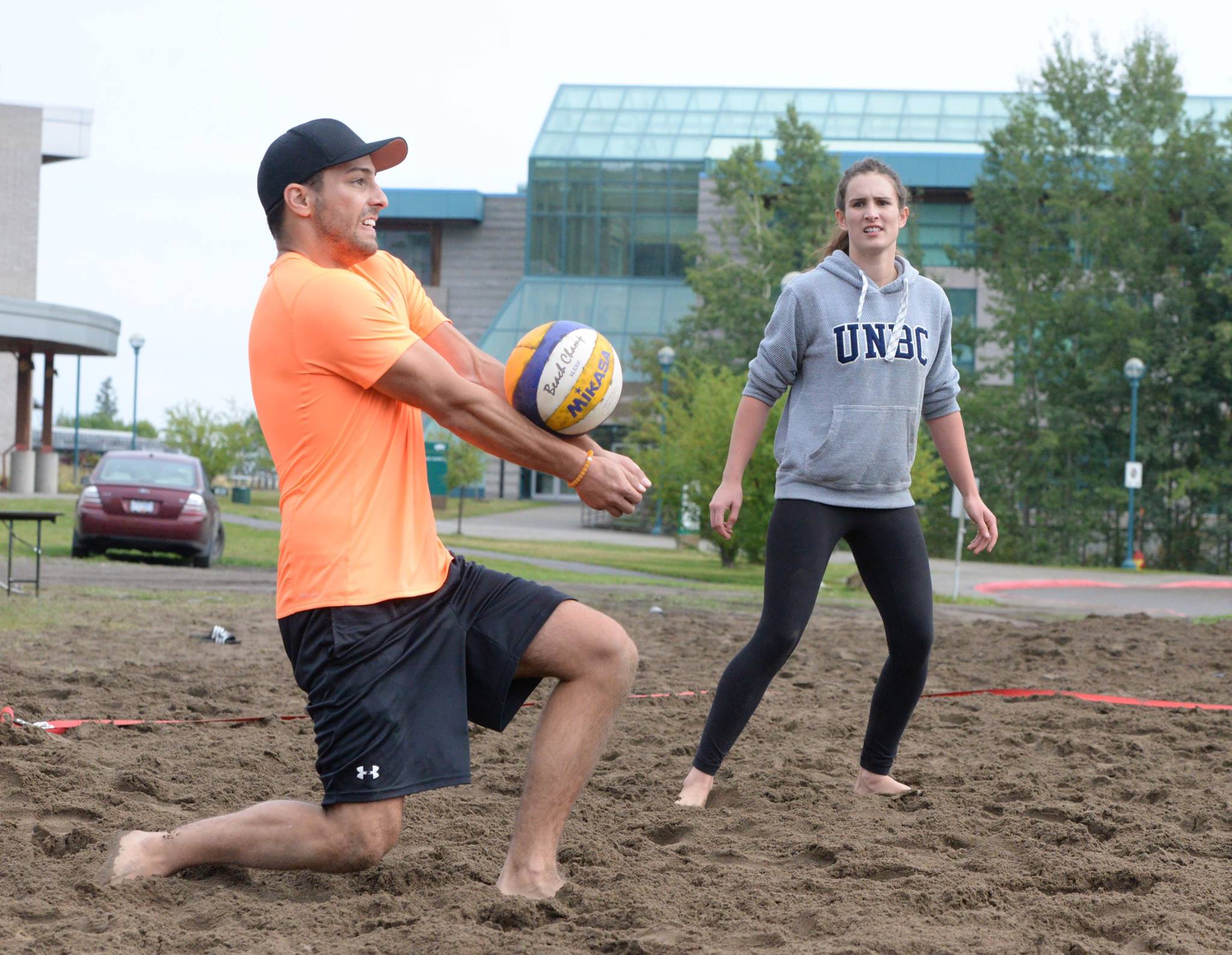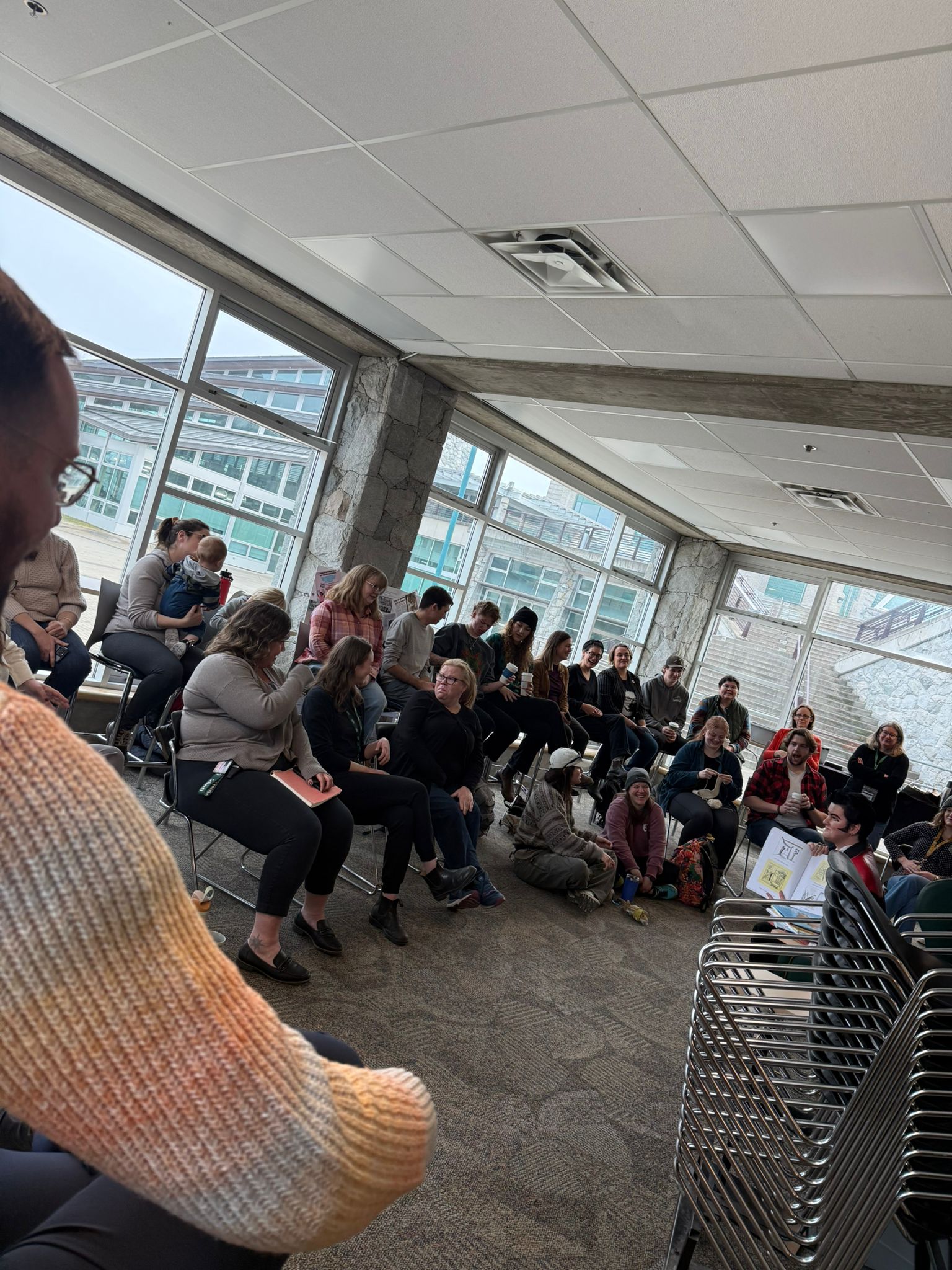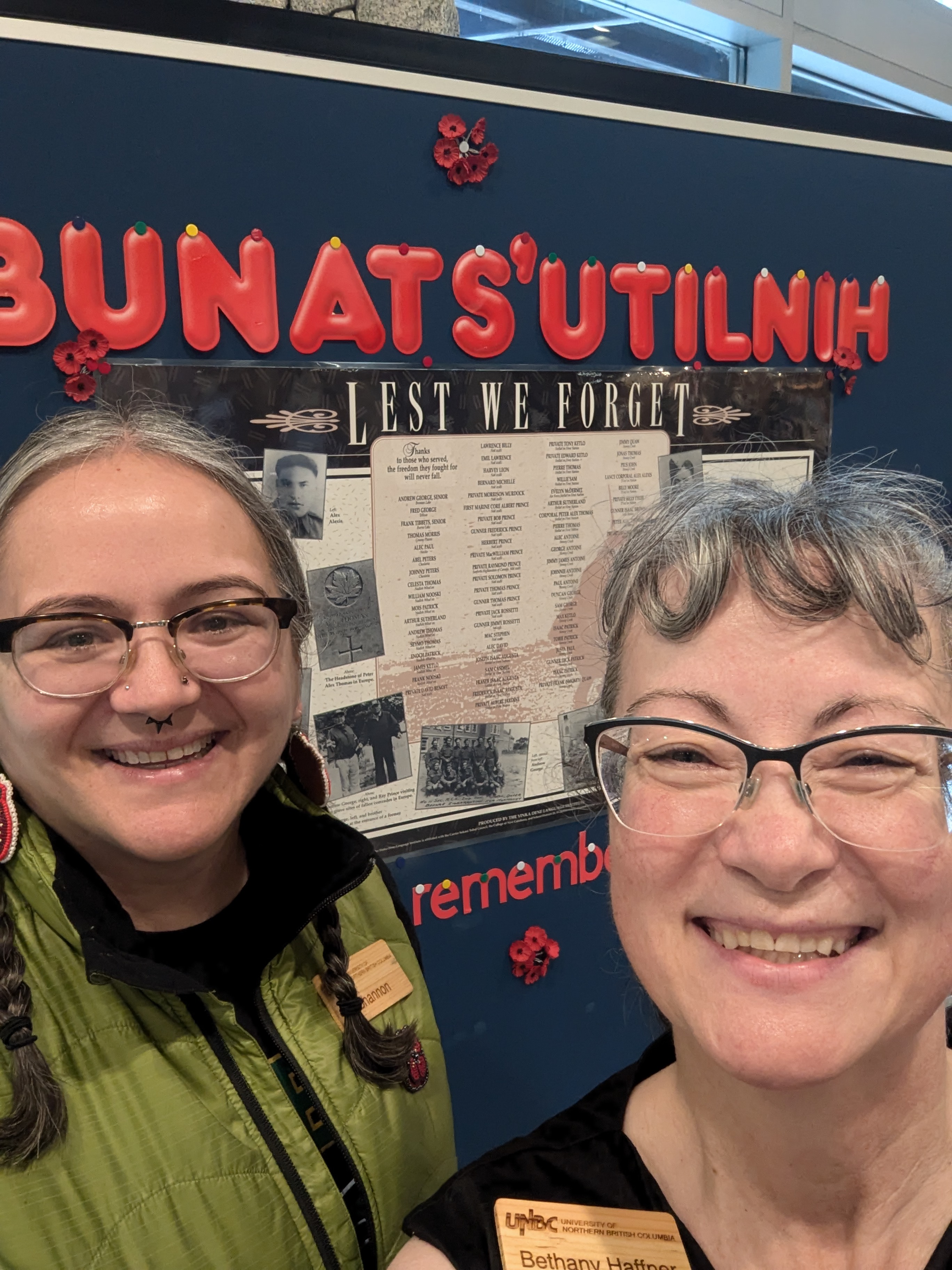October is National Occupational Therapy Month, and if you’re reading this article, you probably don’t know what occupational therapy is. I didn’t either until my final year of my Bachelor’s degree at UNBC, when the OT program was introduced to the Northern cohort. I’ve always loved helping people and wanted to work in healthcare, but I never knew in what capacity. I explored different options throughout my Health Sciences degree, searching for that perfect fit. Then I looked into occupational therapy, and it was everything I had been searching for: an occupation focused on helping people regain their independence while they’re in their most vulnerable state. But you’re probably still thinking, “I still don’t understand what OT is.” Let me break it down.
WHAT IS OCCUPATIONAL THERAPY?
According to the Canadian Association of Occupational Therapists, occupational therapy promotes health, well-being, and quality of life by supporting access to, initiation of, and sustained participation in the things that clients want and need to do in their daily lives, with the people and in the places where they want to participate. Occupational therapy professionals work with clients of all ages and health statuses who are, or may be at risk of, experiencing difficulties participating in their daily activities.
Occupational therapy professionals collaboratively build and sustain relationships with their clients, which can refer to individuals, families, groups, communities, organizations, or populations. They contribute to a more equitable and just world by recognizing and taking action to address systemic or individual barriers to occupational participation.
In my understanding, the reason most people don’t know what occupational therapy is comes down to one thing: variety. Occupational therapists work in an incredible range of settings, from schools to hospitals, from community centers to clients’ homes. Depending on the setting, your scope of practice and what you do can differ dramatically. An OT working in pediatrics might spend their day helping a child develop fine motor skills for writing, while an OT in acute care might work with stroke patients on regaining mobility and independence. An OT in mental health might focus on coping strategies and daily routines, while an OT in long-term care might conduct seating assessments and pressure injury prevention programs.
This diversity is both our profession’s greatest strength and the reason we remain somewhat of a mystery to the general public.
MY EXPERIENCE IN THE PROGRAM
My experience being part of the UBC Northern Cohort at UNBC has been positive. I had the privilege of studying at my favorite campus in Prince George, where I was settled, while getting a degree from UBC without dealing with Vancouver’s costs. We had dedicated faculty members and visiting clinicians for specialized courses. While most lectures were via video conference, faculty members flew to Prince George to teach us in person while Vancouver students saw us on screen, showing the program’s commitment to equity across all cohorts.
The theoretical component wasn’t overwhelmingly difficult, but it was a lot of work. Coming from Health Sciences rather than psychology or kinesiology, my clinical knowledge was lacking, and I struggled with my fieldwork placements. The reality is, you’re not shadowing. You’re expected to show improvement at each placement and be completely independent by your final one. The expectations were high.
You complete five fieldwork placements with increasing expectations. The tricky part? Your pediatrics experience won’t help much in acute care because they’re completely different. Even in similar settings, OT practice varies depending on the number of clinicians and each preceptor’s approach, making it hard to know what’s expected.
Throughout my placements, I learned that preceptors are absolutely key. I was fortunate to have supportive ones who pushed me to grow. By the end, knowing your strengths, weaknesses, and preferences helps you choose future placements wisely. Also note that placements aren’t fully in your control. We picked our top 5-10 choices, and faculty accommodated based on needs like housing or transportation, but the system might change, and you might not get what you hoped for.
If you’re considering OT or PT, connect with upper-year students. The mentorship from someone in your shoes makes all the difference, from navigating fieldwork to managing workload and understanding different settings. Need guidance? Message me on LinkedIn. Last but not least, here is the graduating class of MOT 2025!






